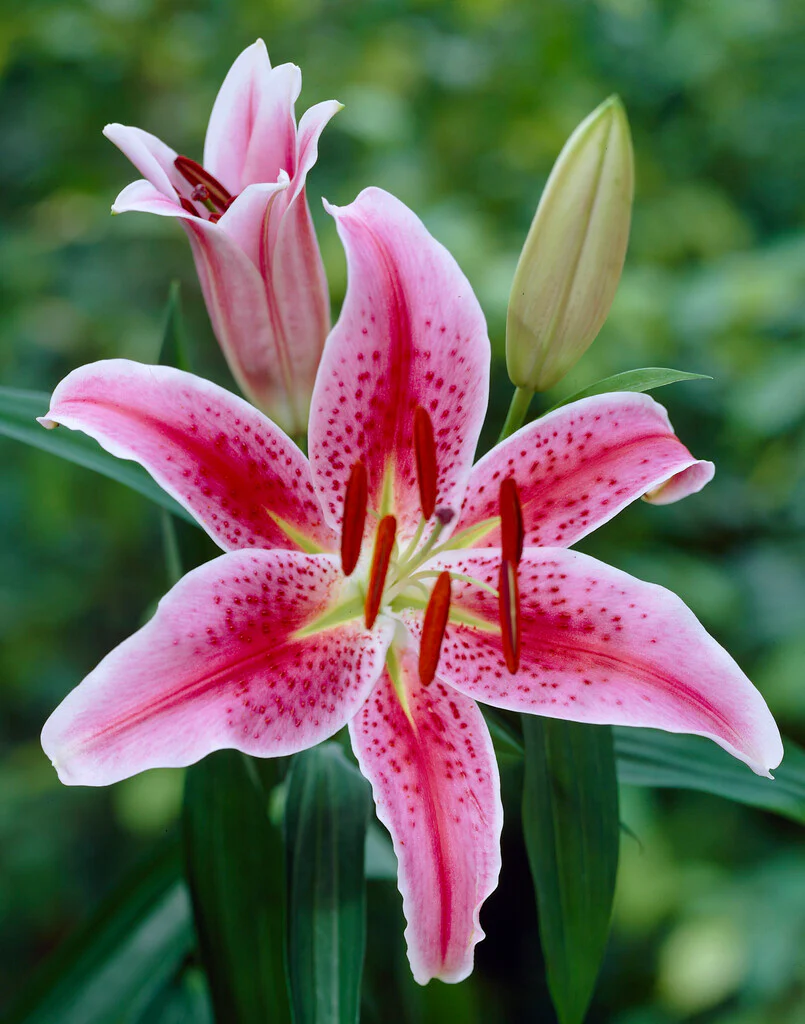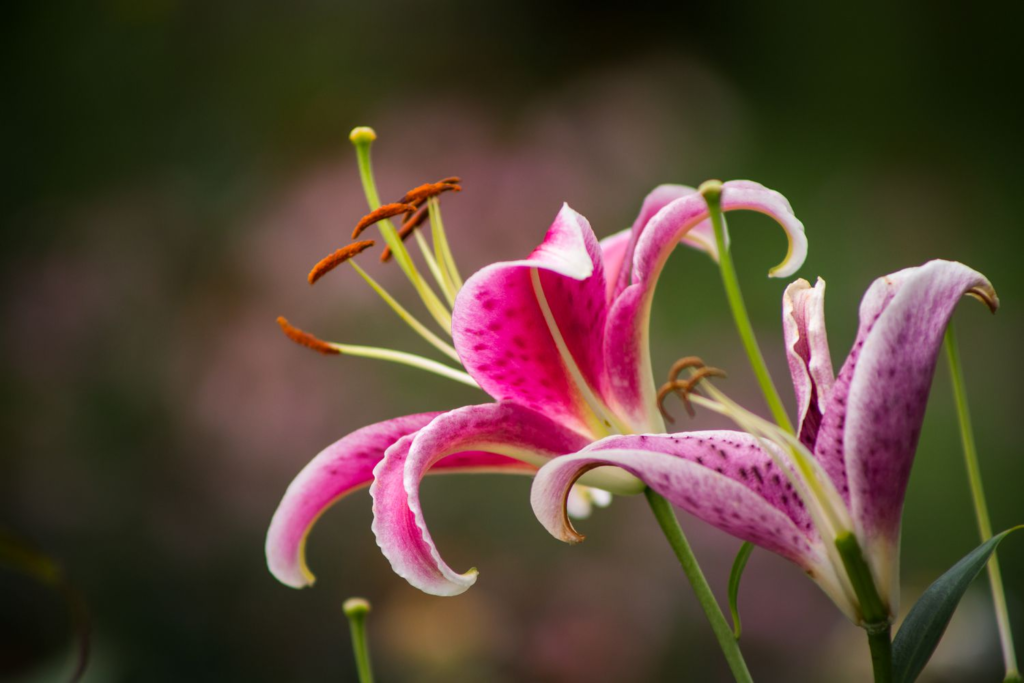One of the most notable mentions of the lily in the Bible is found in the book of Matthew, where Jesus advises his followers not to worry about their material needs, comparing them to the lilies of the field. He highlights how the lilies neither toil nor spin, yet Solomon in all his glory was not adorned as beautifully as one of these flowers. This example showcases the lily’s association with God’s provision and the invitation
Churchgists has provided a well detailed information on the aforementioned and so much more. You will find these details very useful in whatever course you intend to use them for.
The Hebrew name shushan or shoshan, i.e., “whiteness”, was used as the general name of several plants common to Syria, such as the tulip, iris, anemone, gladiolus, ranunculus, etc. Some interpret it, with much probability, as denoting in the Old Testament the water-lily (Nymphoea lotus of Linn.), or lotus (Cant Exodus 2:1 Exodus 2:2 ; 2:16 ; 4:5 ; 5:13 ; Exodus 6:2 Exodus 6:3 ; 7:2 ). “Its flowers are large, and they are of a white colour, with streaks of pink. They supplied models for the ornaments of the pillars and the molten sea” ( 1 Kings 7:19 1 Kings 7:22 1 Kings 7:26 ; 2 Chr 4:5 ). In the Canticles its beauty and fragrance shadow forth the preciousness of Christ to the Church. Groser, however (Scrip. Nat. Hist.), strongly argues that the word, both in the Old and New Testaments, denotes liliaceous plants in general, or if one genus is to be selected, that it must be the genus Iris, which is “large, vigorous, elegant in form, and gorgeous in colouring.”
The lilies (Gr. krinia) spoken of in the New Testament ( Matthew 6:28 ; Luke 12:27 ) were probably the scarlet martagon (Lilium Chalcedonicum) or “red Turk’s-cap lily”, which “comes into flower at the season of the year when our Lord’s sermon on the mount is supposed to have been delivered. It is abundant in the district of Galilee; and its fine scarlet flowers render it a very conspicous and showy object, which would naturally attract the attention of the hearers” (Balfour’s Plants of the Bible).
Of the true “floral glories of Palestine” the pheasant’s eye (Adonis Palestina), the ranunuculus (R. Asiaticus), and the anemone (A coronaria), the last named is however, with the greatest probability regarded as the “lily of the field” to which our Lord refers. “Certainly,” says Tristram (Nat. Hist. of the Bible), “if, in the wondrous richness of bloom which characterizes the land of Israel in spring, any one plant can claim pre-eminence, it is the anemone, the most natural flower for our Lord to pluck and seize upon as an illustration, whether walking in the fields or sitting on the hill-side.” “The white water-lily (Nymphcea alba) and the yellow water-lily (Nuphar lutea) are both abundant in the marshes of the Upper Jordan, but have no connection with the lily of Scripture.”

**1. *Song of Solomon – Allegorical Imagery:*
- The Song of Solomon, a poetic work attributed to King Solomon, stands out for its allegorical and romantic nature. In the context of the Lily, the allegory becomes more pronounced. The “rose of Sharon” and “lily of the valleys” are not just ornamental descriptions; they carry historical and geographical significance. The Rose of Sharon refers to a flowering plant indigenous to the region, emphasizing the bride’s uniqueness. The comparison of the Lily among thorns adds a layer of contrast, symbolizing the beloved’s purity amidst life’s challenges.
**2. *Matthew 6:28-29 – Botanical Insight:*
- Examining the botanical context of the Lily in Matthew 6:28-29 provides additional depth. The flowers of the field, including the lilies, are highlighted by Jesus as examples of natural beauty. The Lily mentioned here is believed to be Lilium candidum, commonly known as the Madonna Lily. This specific species, with its radiant white petals, was highly prized in ancient times and frequently used in various ceremonies.
**3. *Symbolic Meanings – Layers of Significance:*
- The Lily’s symbolism extends beyond purity and beauty. In the Bible, purity often intertwines with righteousness and spiritual integrity. The Lily, therefore, becomes a symbol not only of physical cleanliness but also of moral and spiritual uprightness. Its ephemeral nature, often associated with flowers, also underscores the transient quality of life, emphasizing the need for a deeper, eternal connection with God.
**4. *Cultural Context – Botanical Appreciation:*
- In the cultural context of the biblical world, the appreciation for botanical beauty was profound. Lilies, with their vibrant colors and enchanting fragrance, were not only ornamental but held cultural and religious significance. Understanding this cultural appreciation provides a lens through which the biblical references to lilies can be seen as tapping into a shared understanding and reverence for the beauty of the natural world.
**5. *Lilies and Religious Art – Iconographic Significance:*
- In religious art, the Lily is not only a passive symbol but also a visual language that artists employed to convey theological concepts. The Lily in depictions of the Annunciation not only symbolizes Mary’s purity but becomes an iconographic tool to communicate the divine nature of the Incarnation. The Lily, often held by the angel Gabriel or presented in a vase, reinforces the spiritual truths being depicted in the artwork.
**6. *Psalm 45:1 – Royal Symbolism:*
- While not explicitly mentioning lilies, Psalm 45:1 provides additional insight into the symbolic value of flowers in a royal and ceremonial context. The psalm describes a royal wedding and speaks of the king’s tongue being “skilled in giving exquisite praise.” The mention of a “lily of the valleys” in Song of Solomon and the richness of language in Psalm 45 collectively contribute to a tapestry of royal and divine imagery, connecting themes of love, purity, and majesty.

The Principal Capitals of the Temple Ornamented With Carvings of
1 KINGS 7:19,22,26Verses in the Bible
- 19 And the chapiters that were upon the top of the pillars were of lily work in the porch, four cubits.1 Kings 7:19 Meaning
- 22 And upon the top of the pillars was lily work: so was the work of the pillars finished.1 Kings 7:22 Meaning
- 26 And it was an hand breadth thick, and the brim thereof was wrought like the brim of a cup, with flowers of lilies: it contained two thousand baths.1 Kings 7:26 Meaning
Molded on the Rim of the Molten Laver in the Temple
1 KINGS 7:26In the BibleVerse Meaning
- 26 And it was an hand breadth thick, and the brim thereof was wrought like the brim of a cup, with flowers of lilies: it contained two thousand baths.
2 CHRONICLES 4:5In the BibleVerse Meaning
- 5 And the thickness of it was an handbreadth, and the brim of it like the work of the brim of a cup, with flowers of lilies; and it received and held three thousand baths.
Lessons of Trust Gathered from
MATTHEW 6:28-30Verses in the Bible
- 28 And why take ye thought for raiment? Consider the lilies of the field, how they grow; they toil not, neither do they spin:Matthew 6:28 Meaning
- 29 And yet I say unto you, That even Solomon in all his glory was not arrayed like one of these.Matthew 6:29 Meaning
- 30 Wherefore, if God so clothe the grass of the field, which to day is, and to morrow is cast into the oven, shall he not much more clothe you, O ye of little faith?Matthew 6:30 Meaning
LUKE 12:27In the BibleVerse Meaning
- 27 Consider the lilies how they grow: they toil not, they spin not; and yet I say unto you, that Solomon in all his glory was not arrayed like one of these.
Conclusion
In a holistic examination, the Lily in the Bible emerges as more than a floral reference—it becomes a multifaceted symbol deeply rooted in the historical, botanical, and cultural contexts of the biblical world. Its mention in poetic and allegorical texts, coupled with its representation in religious art, contributes to a rich and nuanced understanding of the Lily’s significance within the broader narrative of the Bible.